When I was a kid growing up on a farm in the 1950s and 1960s, I only remember seeing deer once the entire time. I was an active kid and was always out and around the farm and local woodlots but I never saw deer. In the past month, I have seen groups of two to five deer several times in my suburban backyard when I look out from the breakfast table.
The white-tailed deer and black-tailed deer populations found in suburban and urban areas across America have increased dramatically since the 1960s. As deer begin to become plentiful, homeowners initially enjoy seeing them and may actually encourage deer to come into their yard by feeding them. Traditionally rural townships becoming suburban may ban hunting or place restrictions on firearm use for safety reasons. Bambi begins to settle in and lose his or her sense of fear for humans.
I once heard some preliminary research results that said that deer in suburban areas have more fawns per doe that they do in the wilder areas. More of these fawns live to reproductive age and then, they too have more twins and triplets than their forest cousins. About the only things that kill them are old age or cars and trucks. There are no predators anymore for them to fear.
Homeowner attitudes change, however, when landscape plants suffer heavy browsing damage and gardens become difficult to grow. In addition to browsing, damage may occur in the fall when bucks begin rubbing antlers on small trees or young nursery stock.
Controlling deer damage in the home landscape is not easy. Of course books have been (and will be) written about ways to prevent deer damage, but there are basically six methods for trying to minimize the damage:
1) Exclusion by deer-proof fence
2) Scare or frightening tactics
3) Habitat modification
4) Hunting
5) Repellents
6) Alternative (non-palatable) plantings
Exclusion - Physically excluding pests such as deer from our landscapes, gardens, orchards, etc. is the most effective way to prevent damage. Unfortunately, it also the most expensive and often, least compatible approach for homeowners.
A deer-proof fence does not fit well with most home landscapes and can be very expensive if large areas are to be protected. For small vegetable gardens, a deer-proof fence may be constructed using standard wire fence attached up 12-foot tall posts but this would not look so good around your ornamental landscape.
Electric fences are less expensive and can be just as effective, however, they do require regular maintenance. For best results they should be constructed before serious damage occurs and must be kept electrified at all times. Researchers have had success using a three-wire electric fence adorned with aluminum foil strips attached at 5-10 foot intervals. The ends of the strips are smeared with peanut butter for “bait.” When the deer lick the bait, they get a “tickle” that warns them of the fence. Also, it is best if the wires are staggered away from each other and not in a single plane. Deer may learn to jump electric fences if they are incorrectly installed or maintenance is lacking.
Scare Tactics- Frightening deer usually only works for short periods of time before they
adapt to the specific tactic. Loud music, water sprayers or lights attached to motion detectors may provide temporary. However, the location of these items will need to be moved every week or so because the deer will quickly learn their location and avoid them.
Longer term success has been reported by people who install the so-called “invisible dog fence” around the entire perimeter of their property. Once the dog is trained to stay inside this area, it may be left outside at night to scare off deer.
Habitat Modification – This approach is expensive and may actually attract deer if misapplied. A professional wildlife biologist should be consulted if this is the desired course of action.
Hunting – Population reduction by sport hunting is the most cost effective, long-term solution and should be seriously considered if damage is wide spread. However, hunting is now prohibited in most suburban or urban areas due to safety issues in populated neighborhoods. Be sure to check with local units of government for specific regulations. My township has authorized specific bow hunters to kill deer in parks and public areas. The meat is donated to the local food pantry.
Repellents- This is the method that is most commonly used by homeowners. Repellents discourage deer from feeding by making the plants either taste or smell bad. The key
factor with any repellent is that it MUST BE ON THE PLANT AT ALL TIMES to be effective. When the deer bends over to sniff at the plant, it must smell bad or if it sticks its tongue out for a taste, it must be very unappealing. All repellents have a tendency to wear off over time. Eventually, the deer can tolerate the diluted smell or taste and will start to graze. The challenge for the homeowner is to keep the repellent material fresh and pungent on the plant. That can be tough but, if you do it, you will have success.
Alternate Plantings – Although their feeding habits may change seasonally, deer choose plants based on nutritional needs, palatability, and past experience. Damage to landscape ornamental plants may occur at any time of the year. When deer numbers are high or food availability is low, damage may occur on plants that they would normally not touch. Deer may exhibit localized taste preferences so what they eat may vary somewhat from site to site.
Research has documented that deer may eat as many as 100 different species of plants in a given locale. However, they do tend to avoid certain species and this knowledge can be helpful in choosing plants for sites where deer area major problem. Check with your local Extension office to see if they have a list of plants that are or are not generally eaten by deer.
Well, those are just a few ideas and factors to consider when dealing with deer in the landscape. Of course, there is no “one size fits all” solution but these are the major alternatives.
As always, if you have landscape gardening questions or have a topic you would like to see covered, please let me know. Also, I have recently published a couple of eBooks that you might want to check out. The titles are, “A Rookie’s Guide to Designing Beds and Borders” and “A Rookie’s Guide to Implementing Beds and Borders“. I am currently working on the next eBook, “A Rookie’s Guide to Hostas, Hostas, Hostas” which should be ready by the end of November, 2012. Also, “A Rookie’s Guide to Maintaining Beds and Borders” is in the works for February of 2013.


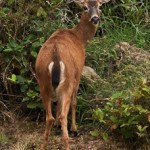
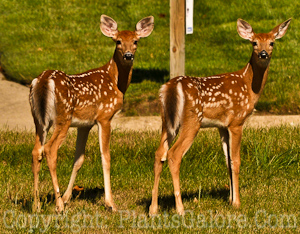
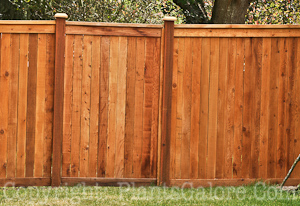
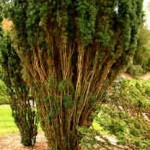
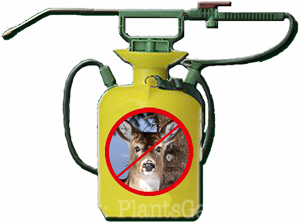

We have a huge problem with deer (herd) in our yard/gardens. Our back yard is bordered by a county park. I am looking into a way to keep them out.. A fence seems to be the only alternative. With the cost of fencing is a problem for we have 1 1/3 yard. Part of which is an orchard. Any suggests on a low cost fence. Electric is not a question.
Hi,
The key parts of your question include the words fence and low cost. Those two factors are usually not compatible unfortunately. Other than electric fencing, the only other “low cost” fence I have heard of is placing two rows of snow fence (about 4 feet tall) with about a 4 or 5 foot space in between the two rows. Deer seem to be unwilling to make the two leaps that close together for some reason. A hostaphile in Ohio who has several thousand cultivars in his collection has used this method for years with great success. The downside, as I see it, is that it is not very aesthetically pleasing.
Good Luck!
Thank you for your very thoughtful and thought-provoking blog. I just moved to my retirement home on a ridge in the Blue Ridge Mountains. My property is bordered by a national forest, so I expect deer and lots of other critters to visit. I am a fan of hostas, aka “deer lettuce”. I am going to try to grow them here, limiting my prevention attempts to using repellants. Are there any brands that show superior results? Should more than one brand be used on an alternating basis to change the odor?
Thanks for your contributions to my knowledge and that of other gardeners.
Eric,
Sorry for the extreme delay in responding to your question. I had to suspend work on the blog for a while to attend to some personal demands.
Anyway, repellants are about the only real option for most hosta gardens. In working with gardeners for several decades, I have heard people swear by and swear at every type of repellant both commercial or home-made. In the end, they all work as long as they are kept on the leaf consistently throughout the growing season. The real problem is that most gardeners are busy doing other things and they let the repellants wear off in the rain. It can be tough keeping it on all the time especially if you have heavy deer populations that will eat the hostas the night that it has worn off enough.
In my garden, I am able to prevent most damage with routine sprays. However, if new flower buds form after the last time I sprayed the plants, I find that the deer will eat them but not eat the leaves that have repellent on them.
So, regardless of what you use the key is that it must be on the leaf surface when the deer bends over to take a whiff.
Ralph aka Mr PGC